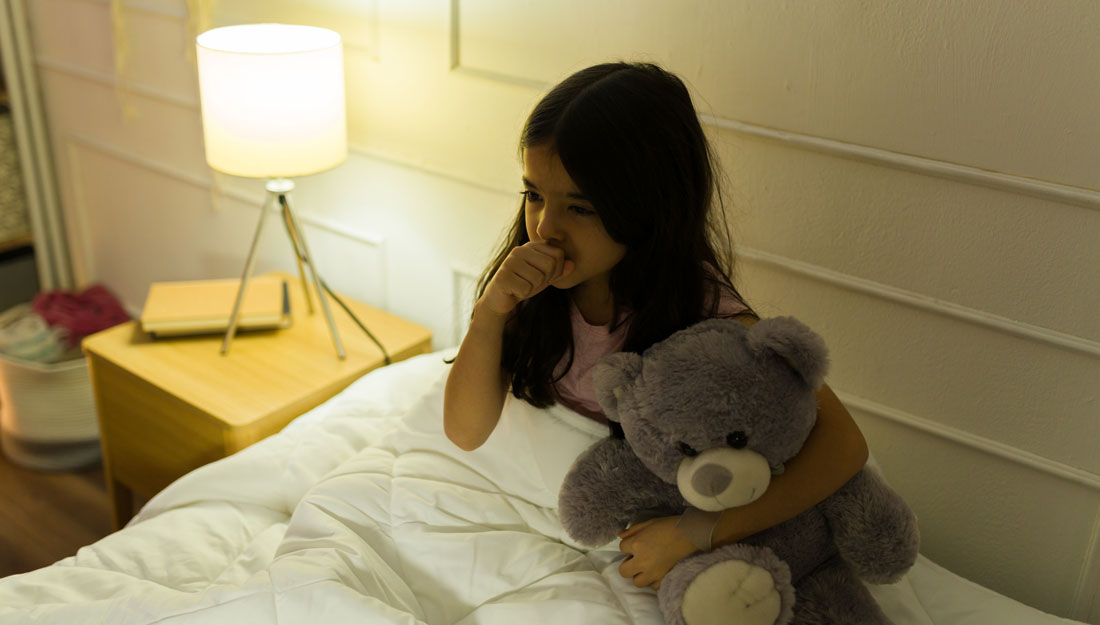- Ann Kellett, PhD
- Public Health, Research, Show on VR homepage
New study assesses housing and its effect on Hispanic children with asthma in the Rio Grande Valley
Proximity to agricultural fields and the presence of curtains, excessive moisture, stuffed toys and pets were the key triggers identified

Coughing was the most common symptom in children with asthma, followed by wheezing with a cold and difficulty sleeping due to symptoms. (Adobe Stock)
Substandard housing is known to have detrimental effects on children with asthma. Now, a study led by Genny Carrillo, MD, professor and director of the Program on Asthma Research and Education at the Texas A&M University School of Public Health, sheds light on the effects of asthma triggers associated with substandard housing on Hispanic children in one county in Texas’ Rio Grande Valley.
“Many Hispanics in the Rio Grande Valley live in makeshift shacks, second-hand mobile homes or repurposed travel trailers,” Carrillo said. “We wanted to learn more about how triggers found inside substandard homes such as these affect families with children with asthma.”
Carrillo, along with colleagues Nina Mendez-Dominguez, MD, from the Regional Specialty Hospital of the Yucatan Peninsula in Mexico and Alejandro Moreno-Rangel, PhD, with the University of Strathclyde in Scotland, assessed the potential asthma triggers of flooring type, window shading and ventilation and heating, as well as the presence of pets, parents who smoke and moisture and mold in the home.
For the study, published in BMC Environmental Science, the researchers conducted a cross-sectional analysis of Asthma Pediatric Quality of Life data gathered by community health workers from 353 children ages 4 to 18 diagnosed with asthma and their parents who lived in substandard housing in Hidalgo County.
The study focused on the study population, the household characteristics of study participants and the impact of asthma on participants before the participants went through an intervention provided by the state-funded Healthy South Texas Asthma Program from September 2015 to August 2020. The program was implemented in Hidalgo County in 2015 to address the prevalence of asthma and the asthma-related hospitalizations among families of children with asthma.
Statistical analyses of the data revealed an overall prevalence of asthma-related symptoms of 19.37 percent, with 23 percent of the children experiencing reduced sleep quality because of asthma.
“Coughing was the most common symptom in children with asthma, followed by wheezing with a cold and difficulty sleeping due to symptoms,” Carrillo said.
The major factors associated with children’s asthma-related symptoms were living in homes near agricultural fields and in homes with curtains and excessive moisture, as well as the presence of stuffed toys and pets inside the children’s rooms.
“Families with these risk factors should be aware of an increased risk of asthma symptom severity, shortness of breath, chest tightness, wheezing, coughs and colds,” Carrillo said.
Carrillo noted that these findings differed from those of other studies, perhaps because these respondents self-reported their symptoms, and the study measured the outcome and exposures of all study participants simultaneously so causality between the environmental factors assessed and asthma symptomatology could not be determined.
“For example, other studies have found that carpets, which have higher levels of dust and allergens that non-carpeted floors, are associated with early-onset asthma, while our study found that carpets were associated only with difficulty sleeping due to asthma symptoms,” Carrillo said.
Regardless, Carrillo said this study provides essential information for the design and implementation of future interventions aimed at improving respiratory health in the home environment.
Media contact: media@tamu.edu


